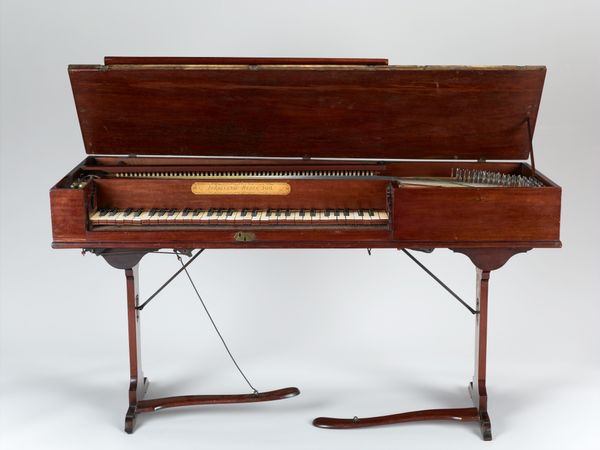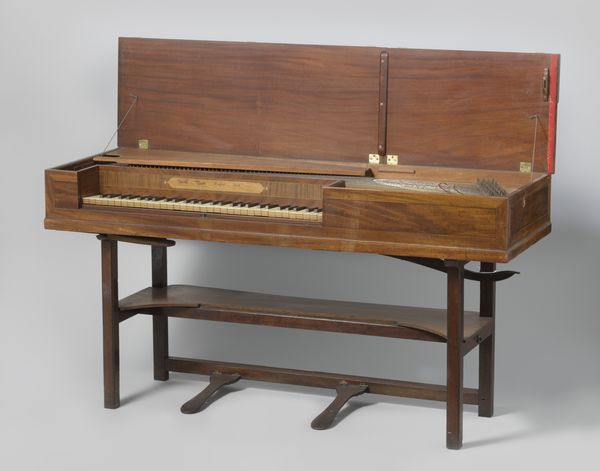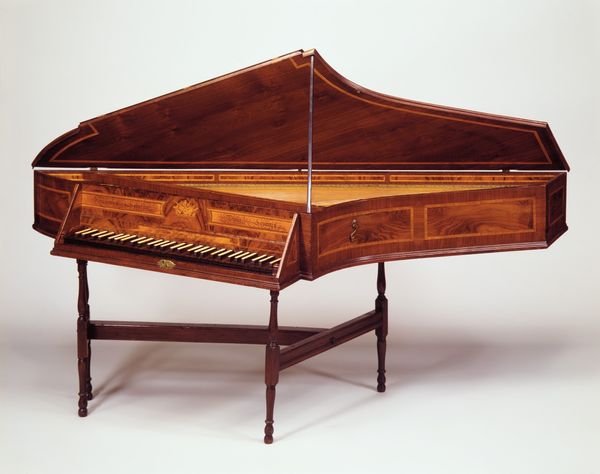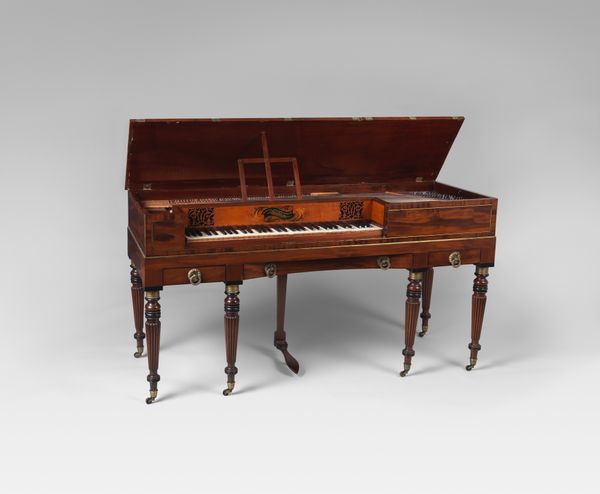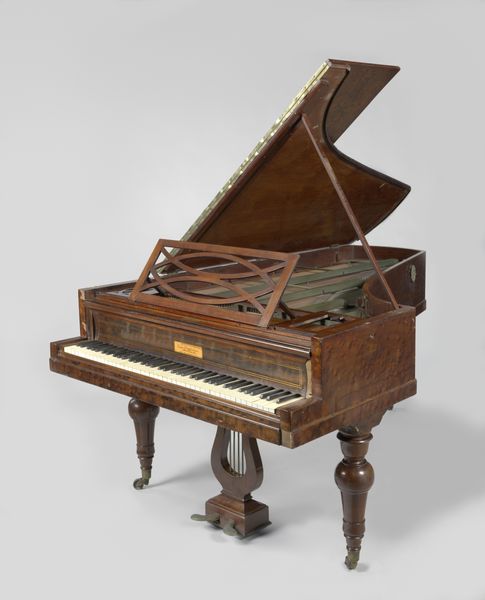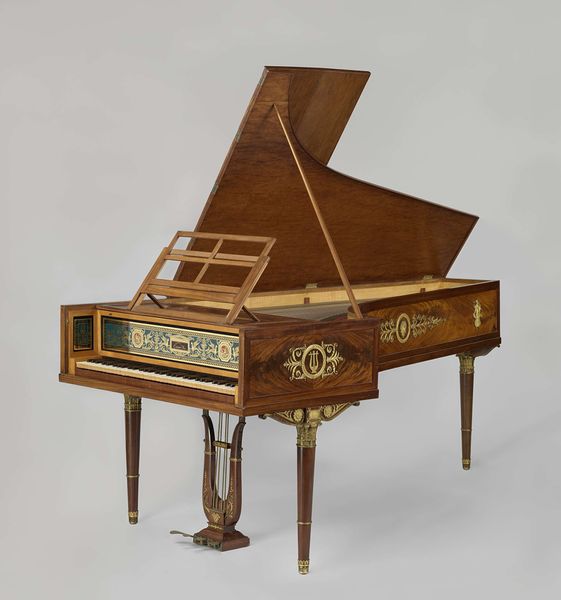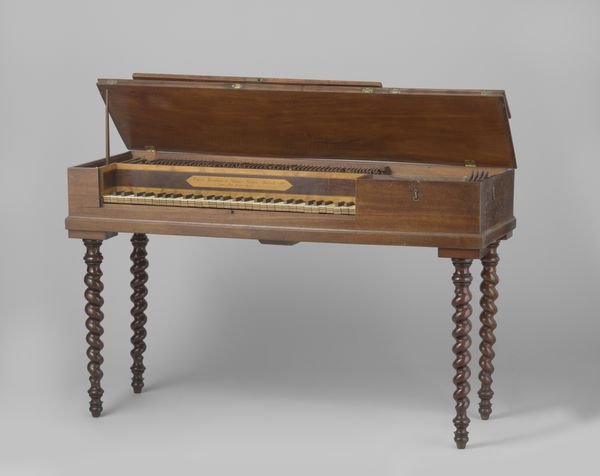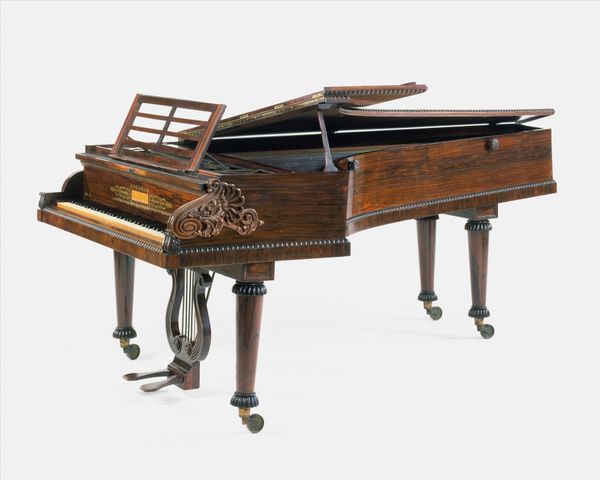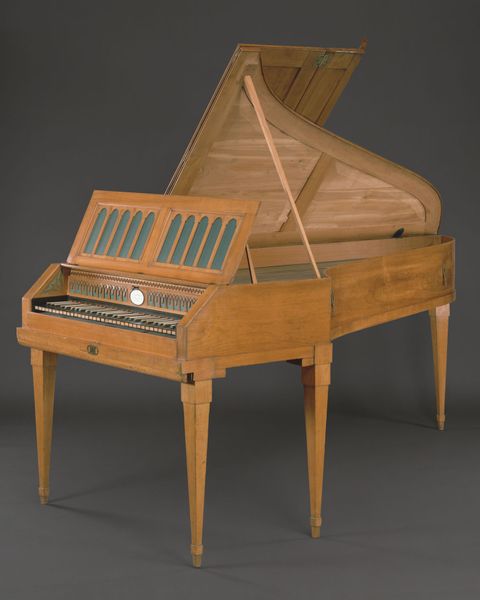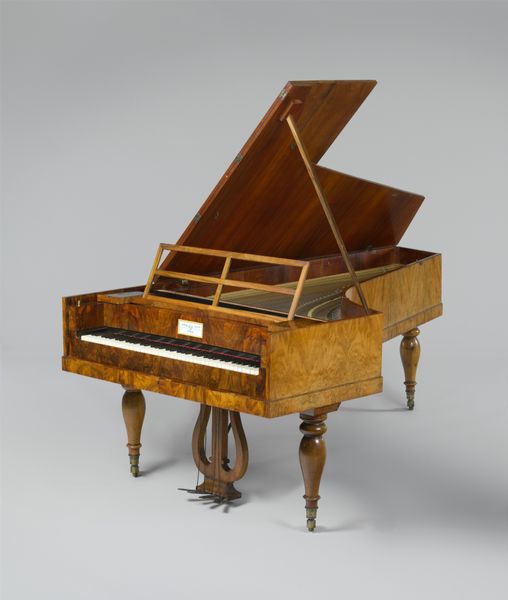
wood
#
15_18th-century
#
wood
#
musical-instrument
#
decorative-art
Dimensions: Case length (perpendicular to keyboard): 57.3 cm (22 5/8 in.) Width (parallel to keyboard): 162.9 cm (64 1/8 in.) Depth (without lid): 22.0 cm (8 3/4 in.) Total height: 86.3 cm (34 in.) Stand with 4 square, tapered legs supporting a shelf and a central damper pedal - Measurements: H. 25 in. W. 64 in. D ~22 1/2 in.
Copyright: Public Domain
Curator: Let's turn our attention to this elegant Square Piano crafted between 1750 and 1799. It currently resides at the Metropolitan Museum of Art. Editor: My first impression is one of refined domesticity. The scale and polished wood suggest a parlor, a space for intimate performances, perhaps within a patriarchal family structure. Curator: Precisely. Note how the rectilinear form is interrupted by the curves of the legs and the lower shelf. These gentle deviations temper the rigidity. The selection of wood is also important; it provides visual warmth, highlighting the geometric structure. Editor: And that warmth undoubtedly speaks to a certain social strata. Who had access to such instruments? Whose stories were being told and amplified through music in those parlors? Music, at that time, played a crucial role in the construction of gendered expectations and cultural capital, shaping how individuals internalized dominant narratives. Curator: True, yet the very presence of a musical instrument pushes the boundaries of domestic space. It transforms a mere room into a setting where personal expression can flourish through structured harmony. Editor: It simultaneously restricts it by creating gender norms that confine the freedom of self-expression of certain people. In the hands of a woman, such as Mary Wollstonecraft, it might represent constrained freedom; or perhaps a powerful outlet as was the case for black female blues musicians during slavery in America who composed revolutionary works to share codes and messages for activism. The music produced would often transcend class boundaries but never escape them, serving at once to solidify existing frameworks even as it destabilizes such impositions. Curator: Intriguing! Looking again, one might appreciate the intricate internal mechanics hinted at by the simple inscription along the front, or through contemplating a performance that once might have happened, or may still come, in spite of restrictions, perhaps expanding our comprehension of past social frameworks. Editor: Absolutely! It prompts vital discussion, bringing both harmony and conflict to life as both of these continue to resonate and transform society even now.
Comments
No comments
Be the first to comment and join the conversation on the ultimate creative platform.
